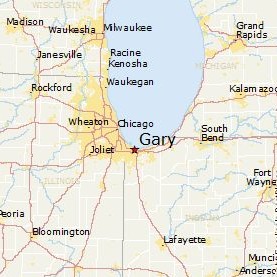This article is part of a ten-article series. See the full list of articles at the end of this one. The articles explore the issues Port of Harlem publisher Wayne Young uncovered and learned about while investing in his economically-challenged hometown, Gary, Indiana, and witnessing gentrification in once-economically challenged Washington, D.C.
The articles cover other places including South Bend, Indiana; Prince Georges County, Maryland; Washington, D.C.; Omaha, Nebraska; Flint, Michigan; Jackson, Mississippi; Florida, and the Lower Colorado River Basin States, specifically, California, Nevada, and Arizona.
After a four-month delay, on November 23, 2022, the building contractor finally began renovating the only home I had known until I moved into my own in 1986, at the age of 26. The decision to renovate my parent’s home instead of taking the chance it could add to Gary, Indiana’s urban blight was a major one.
Similar to many aging Americans, mom was comfortable with her home as she had come to know it. As she became more fragile with age, her desire to age in place grew stronger. She had to be nudged, sometimes hard, to maintain the home at least to the level her children felt she would be safe and comfortable.
We all witnessed one Gary house after another being put up for sale, abandoned, and eventually torn down. I assumed my birth home would eventually face the same fate.
Born during the Great Depression era when folks were forced to do with little, she could resist firmly to suggested home updates she felt were not mandatory. However, there was always a work around: offer to make the change, but only as a birthday, Mother’s Day, or Christmas present.
Her reasoning was economically sound, none of her children had plans to return to the Steel City to take over the home and we all witnessed one Gary house after another being put up for sale, abandoned, and eventually torn down. I assumed my birth home would eventually face the same fate.
For years, mom could not even sell the 1941 built, framed house for as low as $15 per square foot. That sounds odd for a three-bedroom, 1,000 square foot house in a town once dubbed Magic City, named that because of its early exponential growth in the early 1900s.
However, Gary has remained a mystical oddity of sorts. Despite a new, but now aging convention center, baseball stadium, national park, casino, and upgrades to the four major highways that cross the city, gentrification has not made Gary a rest stop, nevertheless a home - - until now, it seems.
Things changed a bit as Hard Rock Casino opened along one of the highways, the pandemic seemed to ease a bit in 2021, and my 92-year-old, relatively healthy mom began to experience her sudden end stage illness. It was then that a myriad of economic conditions caused house flippers to return my calls.
Now, the flipper, who told me six months ago that he was not interested, was willing to pay $15,000 for the house that my parents purchased in 1954 for $7,000. Interestingly, $7,000 in 1951 is equivalent in purchasing power to about $79,900 today or the amount the flipper says they could sell the house once he makes repairs.
Joseph Peterson, President of the Northwest Indiana Creative Investors Association (NICIA), affirms that the easing of COVID in 2021 also marked a change in the Gary housing market. “Before then, if I mentioned Gary is was like ‘OH’, now we don’t have a meeting and not discuss what is going on in Gary,” he says. Peterson who was raised in the Gary exurbs, moved to Steel City and started a Gary subgroup of NICIA in 2016.
While deciding what to do with my parent’s home, I began to confer with my Steeltown neighbors about selling the property including one who had moved away and now wished she had kept her parent’s home. Another who lives in his childhood home, glanced over to the renovation done at a nearby house and said the former occupant’s son now wishes he had done the same.







